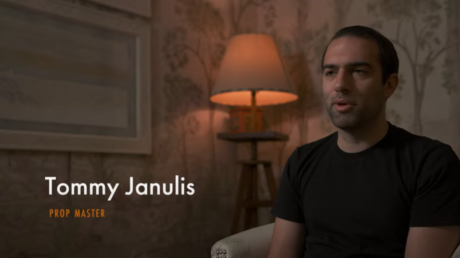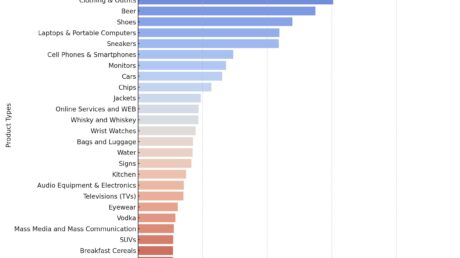In recent years, there have been significant upheavals to the economic and political landscape which have resulted in a profound impact on the cost of living and consumer behavior.
As a result, brands are now facing new challenges in engaging with shoppers, who have become increasingly savvy and discerning in their purchasing decisions. For brands to succeed in this new environment, there are four key principles to follow in order to win at shopper marketing.
Moods, not missions
Most shopper marketing focuses on purchase behaviors and trends, resulting in brands ending up all saying the same, generic thing to get attention. The focus needs to be on the why behind the what when it comes to shopper and consumer behavior.
Brands need to tap into the mood of their target audience. Consumers seek out moments that make them feel emotion whether it be happy, excited, surprised or sad.
By understanding consumers and what feeling they are aiming to achieve when they engage with a product or brand, it is possible to understand purchasing decisions.
Heinz’s Get Well Soon campaign is an example of a brand talking to mood rather than mission. Rather than a cliche campaign about having a warming soup in cold winter, Heinz found a specific and genuine consumer truth: people reach for soup in the winter when they are feeling unwell, and it cheers them up.
The successful solution was a personalized ‘Get Well Soon’ can of soup, executed in a way that turned a social media channel into an e-commerce platform, driving significant talkability. Aligning messaging with the mood of the target audience will distinguish where a brand can credibly play a role and be distinctive against its competitors.
Culture, not category
According to our research, 70% of shoppers are influenced by culture when deciding what brand to purchase. Leveraging local communities and cultural trends is a key way to remain relevant and consolidate brand preferences.
With 61% of people relying on friends and family to discover new brands, campaigns that generate word-of-mouth buzz are critical. Brands that tap into the cultural zeitgeist and understand the values of their target audience will be better placed to create campaigns that really resonate with consumers.
For Uefa Euro 2020 and Fifa World Cup 2023, we used football fandom culture to create shopper campaigns for Budweiser, enabling people to demonstrate their national pride and feel part of something bigger during the tournaments.
Differentiating between fan culture for international tournaments v general club-based fan behavior and leveraging official sponsorship in a way that other brands couldn’t, was crucial to the success of the campaign as it allowed us to create something that a whole tribe wanted to buy into.
Inspiration, not function
Shoppers can be overwhelmed by a myriad of very similar products, scrolling e-commerce sites, searching for a product or waiting to be inspired. Our research found just 22% of shoppers know what brand they are going to purchase from before entering the store. This gives brands an opportunity to build equity at the point of purchase – or at the point of consumption.
Once brands understand this, they can provide consumers with a variety of original ways to use a product but also inspire them as to how brands can play in their lives. Xbox did exactly this by merging travel marketing with the gaming market to entice a new, non-traditional gamer audience, creating a whole new category of gaming: gaming tourism with their campaign ‘Visit Xbox’.
However, it’s important for brands to know how to personally inspire shoppers. Baileys, for example, reframed its brand as an ingredient rather than just a drink. The brand understood how to inspire shoppers to think of the drink as part of their lifestyle, rather than as a one-off nightcap at Christmas.
Connected, not fragmented
There is currently a disconnect between brand campaigns/activations and shopper campaigns/activations resulting in a slower, less impactful result. Too often shopper and brand are thought about separately when, in reality, there is an opportunity for shopper marketing to leverage the power of brand and consequently drive sales.
Our recent campaign for Jameson in global travel retail saw us working closely with both brand and shopper teams to create a stand-out campaign that resonated with the audience’s mood. The campaign was designed to cater to a traveler-specific mindset, rather than the shopping mission in duty-free.
It showed how Jameson is the brand that helps travelers feel like a local wherever they go. This created a genuine distinction between the brand versus competitor whisky brands which simply talk to the functional purchase moment. The store/on-trade outlet should feel like an extension of the brand experience, not just a place to buy mindlessly. It’s crucial to engage with shoppers at the point of decision-making.
The next generation of shoppers is a discerning and savvy group that values authenticity, inspiration, and experiences that evoke an array of emotions.
To succeed in this new landscape, brands need to tap into the mood of their target audience, leverage local communities and cultural truths, create shareable content that inspires and delights consumers, and use a broad media mix to ensure a seamless experience across multiple touchpoints.
For brands that take heed, long-term relationships with consumers and growth in an increasingly competitive market are just some of the benefits they can look forward to.
This piece was originally published by The Drum and was written by Kelly Badal.




